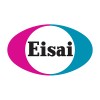
Safety and Tolerability of E5555 and Its Effects on Markers of Intravascular Inflammation in Subjects...
Coronary Artery DiseaseThe primary purpose of this study is to assess the safety and tolerability of E5555 in subjects with coronary artery disease.

Effect of Ozone on Airway Inflammation in Allergic Asthmatics Treated With Omalizumab
AsthmaAllergyOzone can cause acute airway inflammation in both asthmatics and normal volunteers. However, in asthmatics ozone can cause episodes of worsening of asthma. We want to learn if chronic allergic response, known as "IgE-induced airway inflammation" is what causes the increased inflammation in response to ozone. To do this we will examine the response to ozone in a group of asthmatics treated with omalizumab, a medicine available and approved for use in people with asthma, or a placebo control. The placebo for this study is inert physiologic saline ("salt water") which contains no omalizumab. Both the omalizumab and the placebo will be administered as an injection under the skin. Omalizumab, also called Xolair, is a humanized monoclonal antibody, which means that it originally was produced in mice, then genetically engineered to look more like human than mouse antibody. Omalizumab inactivates IgE, a protein our own immune systems make as part of allergic reactions. The purpose of this study is to test the hypothesis that omalizumab, by blocking this aspect of allergic reactions, will decrease the number of inflammatory cells in the airway after ozone challenge. We also hypothesize that omalizumab will decrease the effects of ozone on changes in lung function, mucociliary clearance (a measure of how quickly mucus clears form the airway) and airway reactivity. Airway reactivity is a measure of how sensitive the airways are to a medication used to diagnose asthma, called methacholine. We will examine these as additional information we can learn during the course of the study. This is a blinded study, meaning that neither you nor the researchers know if you get the active drug or placebo, but that information can be obtained if needed. The placebo is an injection of inert physiological saline ("salt water") which contains no omalizumab.

Evaluation of the Effect of Levalbuterol on Allergen Induced Airway Inflammation In Subjects With...
AsthmaThe most commonly used drug for immediate relief of symptoms of asthma is the blue puffer, albuterol or salbutamol (Ventolin). Racemic albuterol is a mixture of two forms of albuterol which are mirror images of each other i.e. R-and S- isomers. The investigational treatments are R-albuterol and S-albuterol. R-albuterol ( levalbuterol) has been shown to have a slightly better bronchodilator effect as compared to the racemic albuterol and is well- tolerated in patients. However it is still not clear whether the S-isomer has no effect or has a harmful effect on the airways. The purpose of this study is to compare the effects of the R- and S- isomers on allergen induced airway inflammation in subjects with mild atopic asthma. This will give us a better idea as to whether the routine use of levalbuterol is superior to racemic albuterol.

Fish Oil (Omega 3), Immune Function, and Mood
InflammationThis study is designed to examine the effects of fish oil on immune function and mood.

Nepafenac Opthalmic Suspension 0.1% Compared to Acular LS for Treatment of Inflammation After Cataract...
CataractThe purpose of this study is to compare the effectiveness of Nepafenac Ophthalmic Suspension, 0.1% eye drops to Acular LS eye drops, used before and after cataract surgery, for treating inflammation in the eye.

N-acetylcysteine in Intra-amniotic Infection/Inflammation
LaborPremature4 moreThe aim of the study is to determine if N-acetylcysteine (a potent free radical scavenger) prevents the occurrence of adverse neonatal outcomes in preterm deliveries complicated by infection associated with preterm labor or preterm premature rupture of membranes (PPROM). The working hypothesis is that in pregnancies complicated by intra-amniotic infection or inflammation, N-acetylcysteine protects the fetus by preventing the development, or decreasing the intensity and/or progression of the fetal inflammatory syndrome.

Targeting INflammation Using SALsalate in Type 2 Diabetes (TINSAL-T2D)
Type 2 DiabetesGrowing evidence over recent years supports a potential role for low grade chronic inflammation in the pathogenesis of insulin resistance and type 2 diabetes. In this study we will determine whether salsalate, a member of the commonly used Non-Steroidal Anti-Inflammatory Drug (NSAID) class, is effective in lowering sugars in patients with type 2 diabetes. The study will determine whether salicylates represent a new pharmacological option for diabetes management. The study is conducted in two stages. The first stage is a dose ranging study, administering salsalate compared to placebo over three months. The primary objective of Stage 2 of the study is to evaluate the effects of salsalate on blood sugar control in diabetes; the tolerability of salsalate use in patients with type 2 diabetes (T2D); and the effects of salsalate on measures of inflammation, the metabolic syndrome, and cardiac risk. The second stage is a second trial and posted under alternate registration.

Modification of Chronic Inflammation by Inhaled Carbon Monoxide in Patients With Stable Chronic...
Pulmonary DiseaseChronic ObstructiveThe purpose of this study is to determine whether carbon monoxide is effective in the treatment of stable COPD.

Magnetic Resonance Imaging to Detect Blood Vessel Inflammation in Patients Undergoing Peripheral...
AtherosclerosisPeripheral Vascular DiseaseThis study will examine the use of magnetic resonance imaging (MRI) in detecting blood vessel inflammation. The results of this study may later be applied to diagnosing inflammation of arteries in patients with atherosclerosis, predicting disease progression in these patients, and guiding therapy. Patients with peripheral artery disease (for example, blockage of a leg artery) undergoing balloon angioplasty at Suburban Hospital in Bethesda, Maryland, may be eligible to participate in this study. Because this procedure, which opens blocked arteries, can cause inflammation in the vessel wall, it affords an opportunity for studying MRI detection of such inflammation. Study candidates will be screened with a medical history and physical examination. Participants will have a MRI scan and blood drawn at Suburban Hospital before the angioplasty and again either 1 to 3 days or 2 weeks after the procedure. Before the MRI scan is begun, a catheter (a thin plastic tube) is inserted in an arm vein and 90 milliliters (about 3 ounces) of blood is drawn. The patient then lies on a table that slides into the MRI scanner-a large donut-shaped machine with a magnetic field. A flexible, padded sensor called an MRI coil is placed over the area to be imaged; this device is used to improve the quality of the pictures. During the scan a contrast material called gadolinium is injected through the catheter. Gadolinium brightens the image of the blood vessels. The procedure lasts up to 2 hours.

Bone and Inflammatory Outcomes - Nutrition and Exercise Trials
HealthyBone1 moreThis study investigates whether dairy products will positively impact loading exercise-induced bone turnover and bone cell activity and/or the post-exercise inflammatory response in healthy young adults compared to a carbohydrate drink and/or water.
